Texas Housing Insight June 2024 Summary
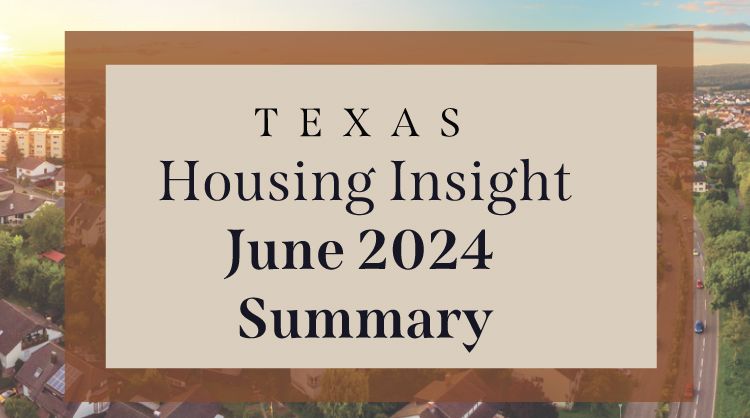
Housing activity for both new and existing homes decreased considerably in June. Growth in active listings resulted in downward pressure on home prices. Seasonally adjusted home prices dipped 1.5 percent, which is uncharacteristic for June when housing activity normally peaks for the year. Home Sales Take Major Downhill Slide in June Texas witnessed a 14.2 […]
June 2024 DFW Real Estate Stats

https://youtu.be/I-Za1hR_GFw?si=q3T4BJErGsXV_xh5 In June 2024, the real estate landscape across various counties in the Dallas-Fort Worth area continued to show varied patterns. In Collin County, there was a notable 9% increase in new listings, alongside a substantial 41.5% rise in active listings compared to the previous year. The average days on the market saw an 11% […]
Texas Housing Insight May 2024
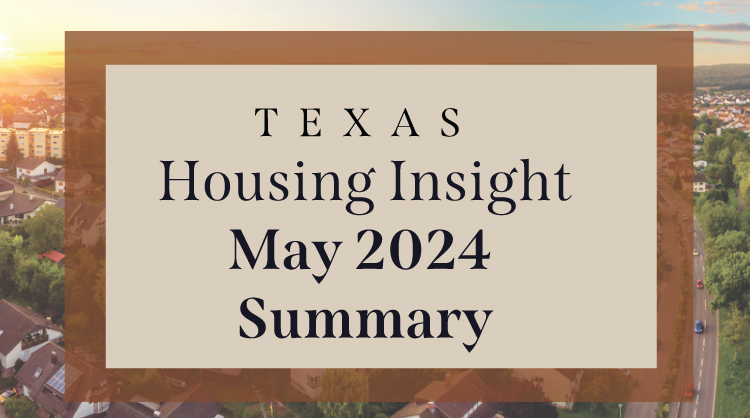
All measurements are calculated using seasonally adjusted data, and percentage changes are calculated month-over-month, unless stated otherwise. Data are current as of June 22, 2024. Housing activity for both new and existing homes decreased in May. Despite a rise in active listings, home prices remained the same at $340,000 for the second month in a […]
May 2024 DFW Real Estate Stats

https://youtu.be/rVy-Vsp1BVg In May 2024, real estate trends across several counties in the Dallas-Fort Worth area showed varied patterns. In Collin County new listings increased by 22%, while active listings rose by 47% compared to the previous year. The average days on the market decreased by nearly 10% and the average sales price remained unchanged, but […]
Texas Housing Insight April 2024 Summary
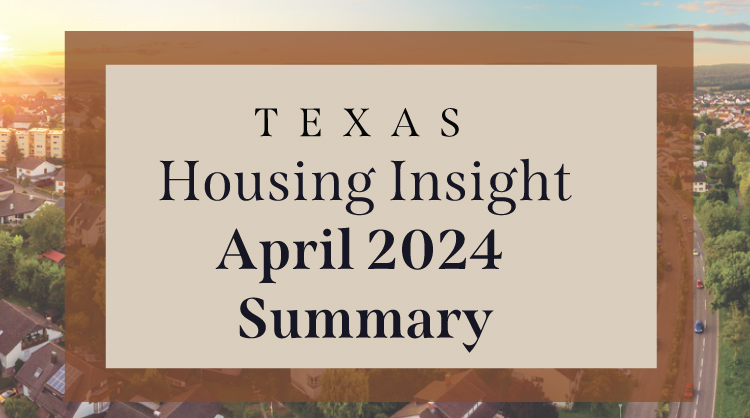
Seasonally adjusted housing sales bounced back in April following March’s decline. New listingsgrew for the fourth month in a row resulting in the total active listings count growing to its highest level since July 2012. Home prices remained the same at $340,000 for the second month in a row. New Home Listings on the Rise […]
Texas Housing Insight March 2024 Summary
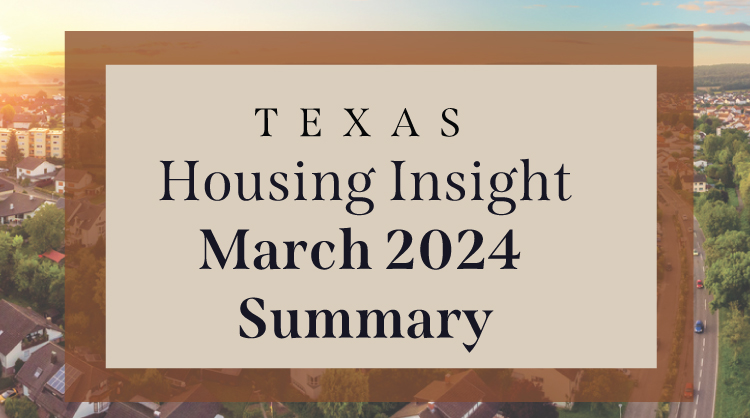
Seasonally adjusted housing sales fell in March following February’s growth. Despite the drop, three months into the year cumulative sales are at the same level as last year. Home prices on the other hand remained the same at $340,000 for the second month in a row. Texas Housing Insight is a summary of important economic indicators […]
April 2024 DFW Real Estate Stats

https://youtu.be/wIVIEcpmCMQ In April 2024, real estate activity across North Texas showed distinct trends, both in similarities and differences. New listings surged in each county, with Collin County experiencing an impressive 43% increase, followed closely by Denton County at 27%, Dallas County at 24%, Tarrant County at 22%, and Rockwall County at 2.8%. While Collin County […]
March 2024 DFW Real Estate Stats

https://youtu.be/n0ygLPyn63c In March, there’s significant news across all reported counties: new and active listings have surged, particularly notable spikes seen in Collin and Denton counties. Despite this uptick in listing activity, inventory remains tight, with less than three months’ worth available. Closed sales in Collin, Dallas, Denton, Rockwall, and Tarrant counties have seen an almost […]
Texas Housing Insight January 2024 Summary
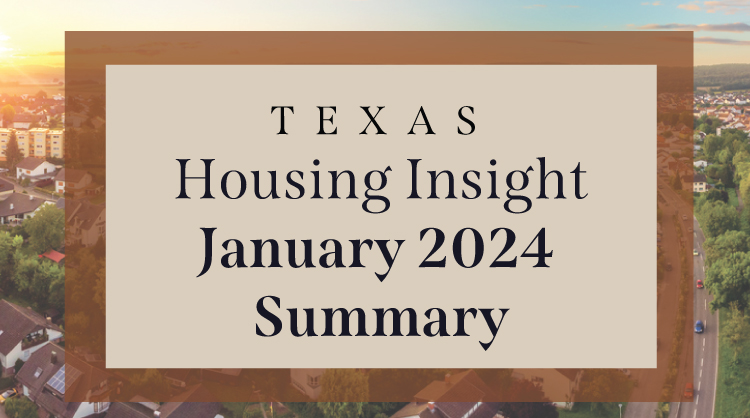
Housing sales rebounded from last month’s drop despite mortgage rates remaining at elevated levels. The average home price grew alongside sales, with the cost rising over $9,000 since December 2023. Single-family starts decreased while permits increased. Home Sales Skyrocket According to the latest data, Texas had a 14.6 percent increase in total home sales month […]
February 2024 DFW Real Estate Stats

https://youtu.be/87e2t6gUvEE February 2024 showed positive trends in terms of increased new listings, active listings, and a decrease in days on market across North Texas. However, closed sales varied, with some counties experiencing notable declines. Additionally, while the average sales price increased in most counties, Collin County stood out with a slight decline. These variations indicate […]
